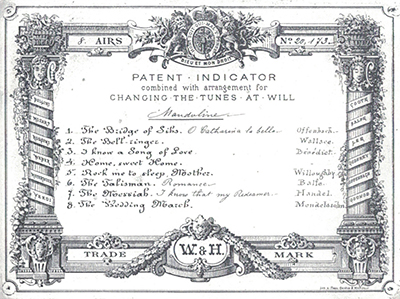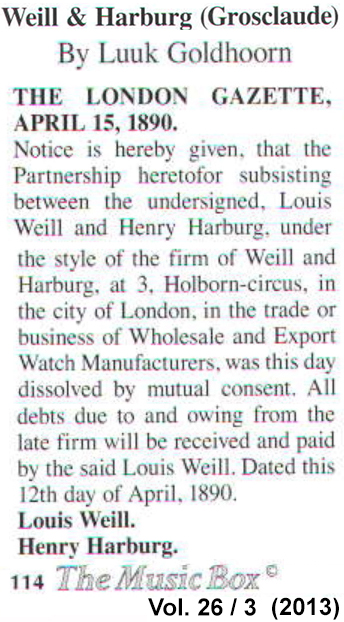|
Weill & Hartburg, Genève, (? – Apr. 12th, 1890) Most makers made comparatively few „super“ boxes with bells, organs etc., among hundreds of more modest types. Possibly some makers were less concerned to stamp their names on their less exotic products, leaving a clear field for their agents. (Bulleid, Technology, p. 18) "A maker of musical boxes who had a London office at 3 Holborn Circus and who ceased trading early in the 1880s. Their combs were always stamped `Trade Mark/W. & H./ Patent´ and their initials also appeard on the tune sheets, which bore the legend `Patent/ Indicator combined with Arrangement for Changing the Tunes at Will´. The characteristic referred to was patented in England in February 1869 (Brit. Pat. No. 593) by Henry Harburg, and consisted of a modified form of controls. The stop/start lever was fitted as an extension to the Y-lever of the gear train detent, and the change-repeat lever was integral with the change-wheel finger. On organ boxes, bellows feeder drive was by crank lever in place of the ususal eccentric wheel in the gear train. A quality maker."
Die Zusammenarbeit von Weill und Hartburg endete am 12. April 1890
12/4: •BelMozardRoWeMeyerVer – CooBalfLeeGodOff-Gou•
|


